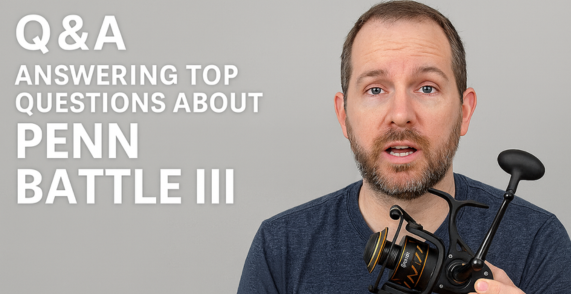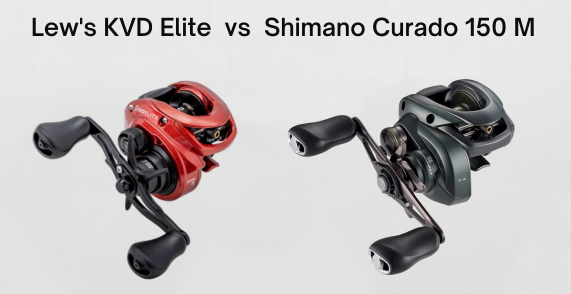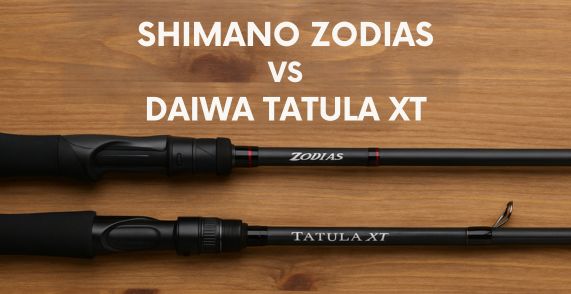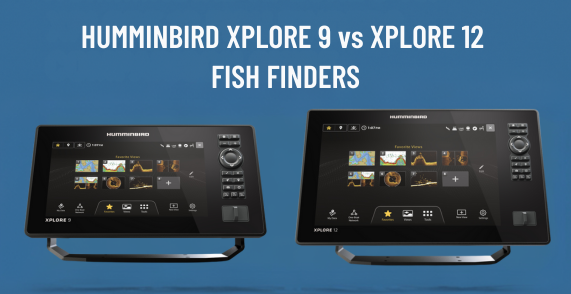In This Post
- 1 Key Takeaways
- 2 What Makes the Penn Battle III Stand Out?
- 3 Understanding the Anti-Reverse System
- 4 Essential Features and Specifications
- 5 Size Guide and Selection
- 6 Maintenance Requirements
- 7 Performance in Real-World Conditions
- 8 Battle III vs. Competitors
- 9 Is the Penn Battle III Right for Your Fishing Style?
Key Takeaways
- The Penn Battle III combines a full metal body with CNC Gear Technology and HT-100 carbon fiber drag system, creating a durable workhorse for saltwater fishing
- Its fixed anti-reverse system is designed for saltwater fishing, eliminating one potential point of water intrusion though the reel is not fully sealed
- Regular maintenance is essential, especially after saltwater use, to prevent common issues with the oscillation system and ensure long-term reliability
- While heavier than competitors like Shimano Nasci, the Battle III offers superior durability and has successfully handled fish well above its size rating
- Fishing Zenith recommends the Penn Battle III as an excellent value option for anglers who prioritize reliability and strength over a lighter, more refined feel
What Makes the Penn Battle III Stand Out?
The Penn Battle III isn’t just another spinning reel – it’s a purpose-built saltwater workhorse that delivers exceptional value for serious anglers.
As the winner of the 2020 ICAST Online Best of Category award for saltwater reels, it combines premium features typically found in higher-end models with a price point that won’t break the bank.
Fishing Zenith recognizes this reel as a standout option for anglers seeking reliability in harsh conditions without compromising on performance.
At its core, the Battle III features a full metal body and side plate construction that provides the rigid framework needed when fighting powerful saltwater species.
This solid foundation eliminates the flex that plagues lesser reels under heavy loads, giving you confidence when that trophy fish makes a powerful run. The reel’s reputation for durability is well-earned – many anglers report successfully landing fish well beyond the reel’s size rating.
What truly separates the Battle III from competitors is its combination of rugged construction with performance-enhancing features.
The CNC Gear Technology ensures smoother operation through precisely cut gears, while the HT-100 carbon fiber drag system delivers consistent pressure throughout the fight. With 5+1 sealed stainless steel bearings, the internal components stay protected even in the challenging saltwater environment.
Available in sizes ranging from 1000 to 10000, there’s a Battle III perfectly suited for everything from light inshore work to heavy offshore applications.
Each size features gear ratios optimized for its intended use, from the faster retrieves needed for lure fishing to the powerful low-ratio models designed for bottom fishing and jigging.
Understanding the Anti-Reverse System
How the Fixed Anti-Reverse Works (vs. Switchable Systems)
One of the most common questions about the Penn Battle III concerns its anti-reverse system. Unlike some older or more basic reels, the Battle III features a fixed anti-reverse system with no user-controlled switch.
This isn’t an oversight – it’s a deliberate design choice that enhances the reel’s reliability in saltwater conditions.
The fixed anti-reverse utilizes a one-way bearing that prevents the reel from rotating backward, ensuring solid hooksets and immediate engagement of the drag system when a fish strikes.
Without a switchable mechanism, there are fewer moving parts to maintain and, crucially, one less potential entry point for water and salt – a significant advantage for saltwater anglers.
Benefits for Saltwater Fishing Applications
The fixed anti-reverse system offers several distinct advantages for saltwater fishing. First, it provides rock-solid hooksets without any “play” in the system, crucial when targeting fish with tough, bony mouths.
Second, it ensures immediate drag engagement, preventing the momentary slack that can occur with lower-quality systems.
For saltwater anglers specifically, the simplified design means greater long-term reliability. Without an anti-reverse switch, there’s one less component to corrode or fail after exposure to salt spray.
This aligns perfectly with the Battle III’s reputation as a dependable workhorse that continues performing even in harsh conditions.
Adapting Your Technique Without Back-Reeling
If you’re accustomed to reels with switchable anti-reverse systems that allow back-reeling, adapting to the Battle III requires a slight adjustment in technique.
Rather than disengaging the anti-reverse to give line manually, you’ll need to rely entirely on the drag system to release line under pressure.
This transition actually encourages better fishing technique. With a properly set drag, the reel will automatically release the perfect amount of line when a fish makes a run, reducing the risk of angler error during critical moments.
The HT-100 drag system in the Battle III excels at providing smooth, consistent pressure throughout the fight, making manual back-reeling unnecessary even when targeting powerful fish.
Essential Features and Specifications
Full Metal Body Construction
The foundation of the Penn Battle III’s legendary durability is its full metal body and side plate construction. Unlike reels that cut costs with plastic components, the Battle III’s metal frame provides exceptional rigidity when fighting powerful fish.
This solid construction prevents the body flex that can plague lesser reels under heavy loads, ensuring that the internal gearing stays perfectly aligned even during intense battles.
This tank-like build quality is particularly valuable in saltwater environments where durability isn’t just about longevity – it’s about reliability when you’re connected to the fish of a lifetime.
The metal body’s resistance to warping and deformation means you can apply maximum drag pressure with confidence, knowing your reel won’t twist or flex under extreme conditions.
CNC Gear Technology for Smooth Performance
At the heart of the Battle III’s drivetrain is Penn’s proprietary CNC Gear Technology. Rather than using cast or stamped gears, Penn precisely machines these critical components from solid blocks of metal.
This manufacturing process creates gears with superior tolerances and smoother meshing surfaces, resulting in a noticeably smoother retrieve and enhanced durability.
The precision-cut brass pinion gear works in harmony with the aluminum main gear (brass in larger models) to deliver power without unnecessary noise or roughness.
This refined gear system is especially apparent when the reel is under load – where lesser reels might develop a grinding feel, the Battle III maintains its smooth operation even when battling substantial fish.
HT-100 Carbon Fiber Drag System
The Battle III’s HT-100 carbon fiber drag system is where this reel truly shines.
Using carbon fiber drag washers on both sides of the main gear, this system delivers smooth, consistent pressure throughout the entire drag range.
The HT-100 designation indicates that these washers are rated to maintain their performance through 100 miles of line run under pressure – a testament to their durability.
What makes this system special is not just its raw stopping power but its remarkable consistency. The drag applies pressure evenly from startup through the entire fight, without the stuttering or surging that can lead to broken lines and lost fish.
Whether you’re applying light pressure for finesse presentations or maximum drag for stubborn bottom dwellers, the system responds with predictable, reliable performance.
Sealed Stainless Steel Bearings
The Battle III features 5+1 sealed stainless steel ball bearings strategically placed throughout the reel. The sealed design is crucial for saltwater applications, as it prevents salt, sand, and moisture from penetrating and compromising the bearings’ smooth operation.
While the reel itself isn’t fully sealed against submersion, these protected bearings provide an important defense against the most common points of failure in saltwater reels.
These quality bearings contribute to the reel’s smooth retrieval experience and ensure consistent performance over time.
The additional instant anti-reverse bearing (the “+1” in the bearing count) provides rock-solid hooksets by preventing any backward movement of the rotor when you’re setting the hook.
Superline Spool Design
The Battle III’s Superline Spool features a rubber gasket that serves a vital function for modern anglers. This innovative design element allows braided line to be tied directly to the spool without slipping – eliminating the need for monofilament backing.
This not only simplifies the spooling process but also increases the reel’s effective line capacity, allowing you to pack more of your chosen line onto the spool.
Additionally, the spool includes line capacity rings that provide a visual reference of how much line remains – a helpful feature when fighting fish that make long runs.
This thoughtful design shows Penn’s understanding of what matters to serious anglers in real-world fishing situations.
Size Guide and Selection
1000-2500: Light Inshore Applications
The smallest Battle III models are perfectly suited for light inshore fishing applications. The 1000 and 2500 sizes excel when targeting species like trout, small bass, panfish, and modest inshore saltwater species.
With drag ratings between 9-12 pounds and weighing under 10 ounces, these compact reels balance perfectly on light and medium-light rods.
These models feature the fastest gear ratios in the lineup (6.2:1), providing quick retrieves that are ideal for working lures effectively.
Their lighter weight makes them comfortable for all-day casting, while still maintaining the Battle III’s signature durability. For light tackle enthusiasts who don’t want to sacrifice quality, these smaller sizes deliver premium performance in a compact package.
3000-4000: Versatile All-Around Options
The 3000 and 4000 sizes represent the sweet spot in the Battle III lineup for many anglers. These mid-sized reels are truly versatile workhorses, capable of handling everything from larger inshore species to modest offshore duties.
With 15 pounds of drag pressure and braid capacities ranging from 250-360 yards (depending on line weight), they’re equipped to battle redfish, snook, striped bass, and similar mid-sized gamefish.
The 4000 size in particular is often cited as the perfect all-around option – substantial enough for serious fish but not so heavy that it becomes burdensome during a full day on the water.
The high-speed (HS) version of the 4000 offers an impressive 7.0:1 gear ratio, ideal for techniques that require quick line pickup or for fishing in areas with fast currents.
5000-6000: Heavy Inshore and Surf Fishing
Stepping up to the 5000 and 6000 models brings additional power for targeting larger species and fishing more demanding environments. These sizes excel in heavy inshore applications, surf fishing, and light offshore duty.
With 25 pounds of max drag and line capacities approaching 500 yards of 30-50 pound braid, these reels have the stopping power and line reserves needed for hard-fighting fish like bull reds, tarpon, and modest offshore species.
The 5.6:1 gear ratio provides an excellent balance of retrieval speed and torque – critical when fighting powerful fish against strong currents or when working deep-diving lures.
Weighing between 18.8-20.8 ounces, these reels require appropriate rod pairings to balance properly but deliver exceptional performance when battling substantial gamefish.
8000-10000: Offshore and Big Game Fishing
The largest Battle III models are built for serious offshore and big game applications. The 8000 and 10000 sizes feature robust construction, lower gear ratios for maximum torque, and impressive drag ratings up to 40 pounds.
These heavyweights can hold between 475-770 yards of heavy braid, providing the line capacity needed when targeting species known for making long, powerful runs.
With their brass-on-brass gear systems and reinforced components, these larger models are designed to withstand the extreme pressures of offshore fishing.
Though considerably heavier (27.7-38.8 ounces), this additional weight translates directly to strength and durability when facing genuinely powerful fish.
Despite their size, these reels maintain the smooth drag performance and reliable operation that characterize the entire Battle III lineup.
Maintenance Requirements
1. Post-Trip Essential Cleaning
The Penn Battle III’s longevity depends significantly on how well you maintain it after each fishing trip, especially after saltwater use.
Start by tightening the drag knob completely to prevent water from entering the drag system during cleaning. Rinse the reel thoroughly with fresh water, focusing on removing salt, sand, and debris from all surfaces.
Pay special attention to the line roller, bail mechanism, and around the spool area where salt can accumulate. After rinsing, shake out excess water and wipe the reel dry with a clean towel.
Apply a light coating of corrosion inhibitor like Penn’s Reel Oil or Corrosion X to external metal surfaces. Remember to loosen the drag before storage to prevent compression of the drag washers.
This simple post-trip routine takes just a few minutes but dramatically extends your reel’s life and performance. Skipping this maintenance is the leading cause of premature failure in saltwater reels – even high-quality ones like the Battle III.
2. Monthly Maintenance Checklist
Beyond your post-trip care, a more thorough monthly maintenance routine keeps your Battle III performing optimally.
Remove the spool and clean underneath it, checking for any salt crystals or debris that might have bypassed your regular cleaning. Apply a small drop of reel oil to the main shaft and ensure it’s distributed evenly.
Examine the line roller for smooth operation and apply a drop of oil to its bearing. Check all screws and fittings to ensure they remain tight, as vibration during use can gradually loosen them.
Pay particular attention to the handle arm connection, which can develop play over time.
Finally, inspect your line for abrasion or damage, especially the first few yards that see the most action. This monthly routine takes about 15 minutes but identifies small issues before they become major problems.
3. Annual Deep Cleaning Protocol
Once a year, your Battle III deserves a comprehensive service to maintain peak performance. This involves removing the side plate to access the internal gearing system.
Clean old grease from the gears using a suitable degreaser and soft brush, being careful not to damage any components.
After cleaning, apply fresh Penn precision reel grease to the main gear and pinion gear, ensuring proper lubrication without over-greasing. Check the drag washers for wear or contamination – they should be clean and show minimal wear. Apply a thin layer of drag grease if needed.
Inspect all bearings for smooth operation, cleaning or replacing any that show signs of roughness or contamination.
While the Battle III features sealed bearings, they can still benefit from occasional maintenance. Reassemble carefully, ensuring all components align properly and screws are tightened to appropriate torque.
4. Troubleshooting Common Issues
Even with proper maintenance, you might encounter certain issues with your Battle III. One common problem is a sticky drag system, which typically results from salt contamination or dried lubricants.
Removing the spool and cleaning the drag washers with mild soap and water usually resolves this issue.
Another frequent complaint involves the oscillation system (crosswind block), which can develop problems over time. If your line isn’t laying evenly across the spool or the spool motion seems jerky, inspect this component for damage or debris.
The crosswind block is a known potential failure point in the Battle III, but it’s relatively easy to clean or replace if necessary.
Handle play is another issue that may develop – this is usually solved by tightening the handle screw or replacing worn bushings.
For reels that develop a gritty feeling during retrieval, a complete cleaning and re-greasing of the gearing system typically resolves the problem.
Performance in Real-World Conditions
Inshore Fishing Capabilities
In inshore fishing scenarios, the Penn Battle III truly shines. The smaller and medium-sized models (2500-4000) balance perfectly on typical inshore setups, providing enough power for species like redfish, snook, and striped bass without feeling overly bulky.
The sealed bearings and corrosion-resistant construction stand up exceptionally well to the salt spray and occasional dunking that inshore fishing entails.
The smooth drag system performs flawlessly when hooking into fast-running fish, providing consistent pressure without surging.
Anglers report particular satisfaction with the Battle III’s ability to protect light leaders during sudden runs – the drag startup is smooth enough to prevent shocking the line, yet responsive enough to quickly apply pressure.
For techniques like working jigs, soft plastics, or topwater lures, the precision of the retrieve and the solid anti-reverse ensure you maintain constant contact with your presentation.
This translates to better lure action and improved hook-up ratios compared to reels with less refined drivetrains.
Surf Fishing Durability
Surf fishing represents perhaps the harshest environment for any reel, combining saltwater, sand, and frequent impacts. This is where the Battle III’s robust construction pays significant dividends.
The full metal body withstands the inevitable drops onto hard sand or occasional impacts with rocks that come with surf fishing.
The 5000-6000 sizes are particularly popular for surf applications, offering enough line capacity and drag power for most surf species while remaining manageable for extended casting sessions.
The sealed bearings resist the fine sand that finds its way into everything at the beach, and the strong bail spring maintains tension even when retrieving through heavy surf.
Many surf anglers specifically choose the Battle III for its reliability in these demanding conditions.
While lighter reels might seem appealing for the constant casting, experienced surf fishermen often prefer the Battle III’s “built like a tank” approach, knowing it will continue performing when lighter reels begin to falter.
Offshore Strength Test
Taking the larger Battle III models offshore reveals their true capabilities. The 8000 and 10000 sizes handle deepwater jigging, bottom fishing, and trolling applications with impressive power.
The brass-on-brass gearing in these larger models provides the torque needed to winch up substantial fish from depth – a critical factor when targeting species like grouper, amberjack, or tuna.
The drag system maintains its smoothness even under the extreme pressures of offshore fishing. Whether fighting fish straight up from depth or managing long runs, the HT-100 carbon fiber drag delivers consistent pressure.
The larger models’ lower gear ratios (4.2:1 to 4.7:1) provide the mechanical advantage needed when substantial force is required.
Perhaps most impressively, the Battle III achieves this performance at a price point significantly below many dedicated offshore reels.
While it may lack some refinements of premium models costing twice as much, it delivers where it matters most – stopping power and reliability.
Handling Fish Beyond Its Rating
One consistent theme in angler reports is the Battle III’s ability to successfully land fish well beyond its size rating.
The 4000 size, for instance, is rated for mid-sized gamefish but has been documented handling 50+ pound drum and oversized redfish.
This overachieving performance stems from the reel’s no-compromise approach to core components – the drag system, body construction, and gearing are engineered with substantial safety margins.
This overbuilt design provides a significant confidence boost when you hook into an unexpectedly large fish.
While fighting trophy fish on undersized tackle isn’t ideal, the Battle III’s robust construction often saves the day when that “personal best” takes your bait.
The reel’s ability to punch above its weight class makes it particularly valuable for locations where you might encounter a wide range of fish sizes.
Battle III vs. Competitors
Battle III vs. Battle IV: Waterproofing Improvements
The primary advancement in the Battle IV over the Battle III is the introduction of the Hydro Armor system – a significant improvement in waterproofing technology.
While the Battle III features sealed bearings, the Battle IV extends this protection with additional seals around the rotor, spool shaft, and body joints. This enhanced sealing makes the Battle IV considerably more resistant to water intrusion during submersion, addressing one of the few weaknesses of the Battle III design.
Beyond waterproofing, the Battle IV maintains the same core DNA – full metal body, CNC Gear Technology, and the HT-100 drag system.
The improvements are evolutionary rather than revolutionary, focusing on refinement rather than reinvention. For anglers who frequently fish in heavy spray conditions or who occasionally drop their reels in water, the upgrade might be worthwhile.
For those who practice good maintenance habits, the Battle III remains an excellent value, especially as retailers often discount it following the Battle IV’s release.
Battle III vs. Daiwa BG: Durability vs. Smoothness
The Daiwa BG represents the Battle III’s most direct competitor in the mid-priced saltwater reel category. Both reels offer exceptional value and have devoted followings, but they embody different design philosophies.
The Battle III prioritizes rock-solid durability with its full metal body and side plate, creating a reel that feels substantial and unyielding even under extreme pressure.
The Daiwa BG, while still durable, places greater emphasis on smoothness and refinement. Its Air Rotor design reduces weight while maintaining strength, and many anglers find its overall retrieve to be slightly smoother than the Battle III.
However, the Battle III generally edges out the BG in maximum drag power and long-term durability in harsh saltwater conditions.
Choosing between these two excellent reels ultimately comes down to personal preference. If absolute durability and stopping power are your priorities, the Battle III has a slight edge.
If you value a more refined feel and lighter weight, the BG might be more appealing. Both represent excellent values in their price category.
Battle III vs. Shimano Nasci: Weight vs. Refinement
The Shimano Nasci presents another interesting comparison point, embodying Shimano’s focus on refinement and lightweight design.
The Battle III is noticeably heavier than the Nasci in equivalent sizes – sometimes by several ounces. This additional weight comes from the Penn’s full metal construction compared to the Nasci’s more composite-heavy design.
The Nasci delivers Shimano’s characteristically smooth retrieve and excellent line lay, often feeling more refined in hand than the somewhat mechanical feel of the Battle III.
However, this refinement comes at the cost of absolute durability. The Battle III’s heavier construction provides greater resistance to impacts and twisted frames under heavy loads.
For finesse fishing and situations where weight matters significantly, the Nasci’s lighter design offers real advantages.
For applications where durability under harsh conditions takes precedence, the Battle III’s overbuilt construction provides greater peace of mind. The price points are similar, making this truly a choice based on fishing style rather than budget.
Is the Penn Battle III Right for Your Fishing Style?
After examining the Penn Battle III’s features, performance, and competitive positioning, the question becomes: is this the right reel for you? The answer depends largely on your fishing priorities and conditions.
If durability, reliability, and raw power rank highly on your list, the Battle III deserves serious consideration. Its full metal construction, powerful drag system, and precision gearing create a reel that consistently performs in challenging conditions.
For anglers who fish in saltwater environments, particularly those who don’t baby their equipment, the Battle III’s robust design provides excellent long-term value despite requiring regular maintenance.
The Battle III particularly excels for anglers who:
- Fish primarily in saltwater environments
- Need a reel that can withstand occasional rough handling
- Target powerful species that put substantial pressure on gear
- Want a versatile reel that can handle multiple fishing scenarios
- Seek excellent value and durability at a mid-range price point
However, if absolute refinement, lightweight design, and the smoothest possible retrieve are your priorities, other options might better suit your needs.
The Battle III makes no apologies for its utilitarian approach – it’s built to perform reliably rather than to impress with its lightness or ultra-refined feel.
The Penn Battle III continues to represent an excellent value in the mid-priced saltwater reel market. By focusing on the core components that matter most for performance and durability, Penn has created a workhorse reel that delivers where it counts.
For anglers who value substance over style and reliability over refinement, the Battle III remains a compelling choice that will deliver years of dependable service with proper care.







